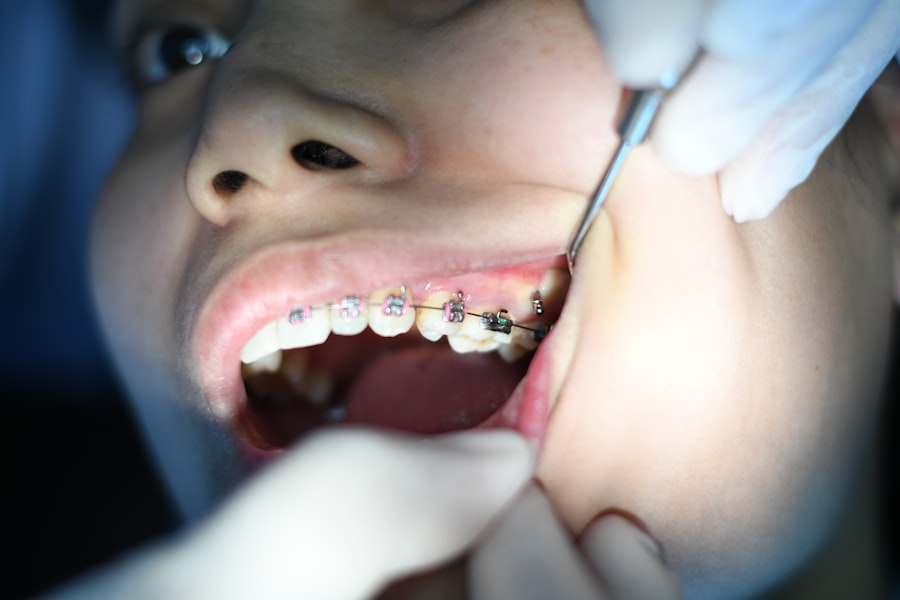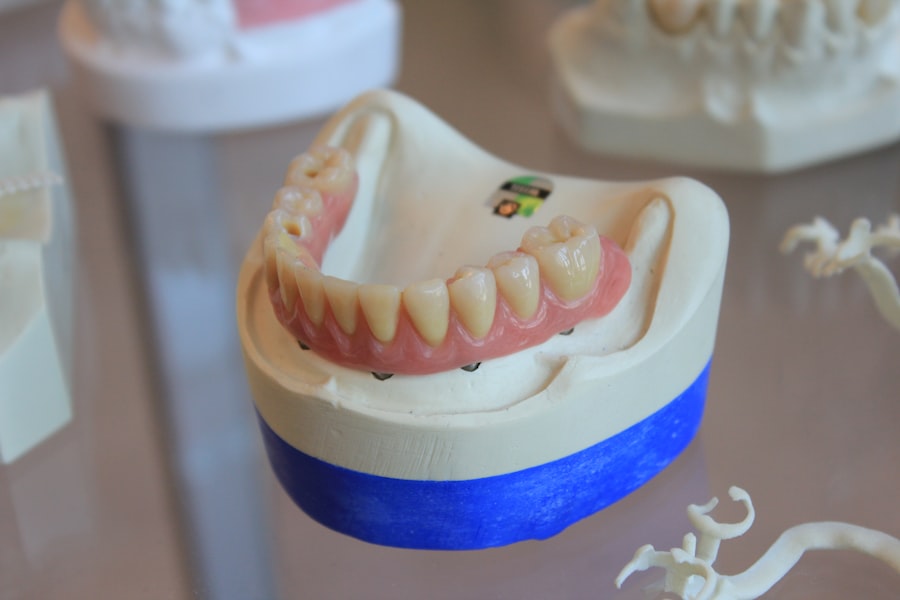To effectively market dental services, it is crucial to have a deep understanding of your target audience. This involves not only identifying who your patients are but also comprehending their needs, preferences, and behaviors. For instance, a dental practice may cater to families, young professionals, or retirees, each with distinct expectations and requirements.
Families might prioritize pediatric services and family-friendly environments, while young professionals may seek cosmetic dentistry options that enhance their appearance. Conducting surveys, focus groups, or utilizing patient feedback can provide valuable insights into what drives your audience’s decisions regarding dental care. Moreover, demographic factors such as age, income level, and geographic location play a significant role in shaping your marketing strategies.
For example, a practice located in an affluent neighborhood may find that its patients are more inclined to invest in high-end cosmetic procedures, while a practice in a lower-income area might focus on providing essential dental care at affordable prices. Understanding these nuances allows dental practices to tailor their messaging and service offerings to resonate with their specific audience, ultimately leading to higher patient satisfaction and loyalty.
Key Takeaways
- Identify and understand your target audience to tailor marketing efforts effectively.
- Establish a clear and consistent brand identity to build trust and recognition.
- Use social media platforms strategically to connect with and attract potential patients.
- Apply SEO techniques to improve your website’s visibility and search engine ranking.
- Engage patients through personalized email marketing and maintain strong relationships with referring dentists.
Developing a Strong Brand Identity
A strong brand identity is essential for any dental practice looking to stand out in a competitive market. This identity encompasses not only the visual elements such as logos and color schemes but also the values and mission that the practice embodies. A well-defined brand identity communicates to potential patients what they can expect from your services and helps establish trust.
For instance, a practice that emphasizes a gentle approach to dentistry may choose soft colors and friendly imagery in its branding to convey warmth and comfort. In addition to visual elements, the tone of voice used in marketing materials is equally important. A practice that aims to attract families might adopt a playful and approachable tone, while one targeting professionals may opt for a more sophisticated and authoritative voice.
Consistency across all platforms—whether it’s the website, social media, or print materials—reinforces brand recognition and helps build a cohesive image in the minds of potential patients. By investing time in developing a strong brand identity, dental practices can create an emotional connection with their audience, making them more likely to choose your services over competitors.
Leveraging Social Media for Marketing

Social media has transformed the way businesses engage with their audiences, and dental practices are no exception. Platforms like Facebook, Instagram, and Twitter offer unique opportunities to connect with current and potential patients in a more personal and interactive manner. For example, sharing behind-the-scenes content such as staff introductions or office tours can humanize the practice and foster a sense of community.
Additionally, posting educational content about oral health can position the practice as an authority in the field while providing value to followers. Engagement is key when leveraging social media for marketing. Responding promptly to comments and messages not only enhances patient relationships but also demonstrates that the practice values patient feedback.
Running targeted ads on these platforms can further amplify reach by allowing practices to hone in on specific demographics based on location, interests, and behaviors. For instance, a dental office could create an ad campaign promoting teeth whitening services specifically targeting young adults preparing for summer events. By utilizing social media effectively, dental practices can increase visibility, attract new patients, and maintain relationships with existing ones.
Implementing SEO Strategies for Online Visibility
| SEO Strategy | Key Metrics | Measurement Tools | Expected Impact | Timeframe |
|---|---|---|---|---|
| Keyword Research & Optimization | Keyword Rankings, Search Volume, CTR | Google Search Console, SEMrush, Ahrefs | Improved organic traffic and visibility | 1-3 months |
| On-Page SEO (Meta Tags, Content) | Page Load Speed, Bounce Rate, Dwell Time | Google Analytics, PageSpeed Insights | Better user experience and higher rankings | 1-2 months |
| Technical SEO (Site Structure, Mobile Optimization) | Crawl Errors, Mobile Usability, Index Coverage | Google Search Console, Screaming Frog | Enhanced crawlability and indexing | 2-4 months |
| Content Marketing & Link Building | Backlink Quantity & Quality, Referral Traffic | Ahrefs, Moz, Google Analytics | Increased domain authority and referral visits | 3-6 months |
| Local SEO | Local Pack Rankings, Google My Business Views | Google My Business Insights, BrightLocal | Higher visibility in local search results | 1-3 months |
| Monitoring & Reporting | Organic Traffic, Conversion Rate, ROI | Google Analytics, Data Studio | Continuous improvement and strategy adjustment | Ongoing |
In today’s digital age, having a robust online presence is vital for attracting new patients. Search Engine Optimization (SEO) is a critical component of this strategy, as it helps improve a website’s visibility on search engines like Google. By optimizing website content with relevant keywords—such as “family dentist,” “cosmetic dentistry,” or “emergency dental care”—practices can increase their chances of appearing in search results when potential patients are looking for dental services in their area.
Moreover, local SEO is particularly important for dental practices since most patients search for services within their vicinity. This involves optimizing Google My Business listings with accurate information about the practice, including address, phone number, hours of operation, and patient reviews. Encouraging satisfied patients to leave positive reviews can significantly enhance local search rankings and attract new clients.
Additionally, creating location-specific content on the website can further improve visibility; for example, writing blog posts about dental health tips tailored to the local community can engage residents while boosting SEO efforts.
Utilizing Email Marketing to Engage Patients
Email marketing remains one of the most effective tools for engaging patients and nurturing relationships over time. By building an email list through sign-ups on the practice’s website or during patient visits, dental practices can communicate directly with their audience about promotions, new services, or educational content. For instance, sending out monthly newsletters that include oral health tips, reminders for regular check-ups, or special offers can keep the practice top-of-mind for patients.
Personalization is key in email marketing; addressing recipients by name and tailoring content based on their previous interactions with the practice can significantly enhance engagement rates. For example, if a patient recently underwent a specific procedure like teeth whitening, sending follow-up emails with care tips or reminders for future appointments can demonstrate that the practice cares about their well-being. Additionally, segmenting the email list based on demographics or treatment history allows for more targeted campaigns that resonate with different patient groups.
Building Relationships with Referring Dentists

Establishing strong relationships with referring dentists is an often-overlooked aspect of marketing for dental practices. Collaborating with other healthcare providers not only expands your network but also enhances credibility within the community. Referring dentists can be valuable allies in driving new patient referrals; therefore, maintaining open lines of communication is essential.
Regularly reaching out to these professionals through phone calls or emails to discuss mutual patients or share updates about your practice can foster goodwill. Hosting events such as continuing education seminars or informal networking gatherings can also strengthen these relationships. By inviting referring dentists to participate in educational sessions or social events at your practice, you create opportunities for collaboration while showcasing your expertise.
Additionally, providing referral incentives—such as thank-you notes or small gifts—can further encourage dentists to refer patients to your practice. Building these relationships not only enhances your referral network but also contributes to a positive reputation within the local healthcare community.
Creating Compelling Content for Your Website and Blog
Content marketing plays a pivotal role in attracting and retaining patients through informative and engaging material on your website and blog. High-quality content not only improves SEO but also positions your practice as an authority in dentistry. Writing blog posts that address common dental concerns—such as tips for maintaining oral hygiene or explanations of various procedures—can provide value to potential patients while encouraging them to visit your site regularly.
Incorporating multimedia elements such as videos or infographics can further enhance engagement. For example, creating short videos that demonstrate proper brushing techniques or explain the benefits of certain treatments can make complex information more accessible and appealing. Additionally, patient testimonials or case studies featured on the website can build trust by showcasing real-life success stories from individuals who have benefited from your services.
By consistently producing compelling content that resonates with your audience’s interests and needs, you can drive traffic to your site and convert visitors into loyal patients.
Measuring and Analyzing Marketing Efforts for Continuous Improvement
To ensure that marketing strategies are effective and yielding desired results, it is essential to measure and analyze efforts regularly. Utilizing tools such as Google Analytics allows practices to track website traffic, user behavior, and conversion rates. By examining which pages receive the most visits or where users drop off during the appointment booking process, practices can identify areas for improvement and optimize their online presence accordingly.
Additionally, monitoring social media engagement metrics—such as likes, shares, comments, and click-through rates—can provide insights into what types of content resonate most with your audience. Conducting regular surveys or gathering feedback from patients about their experiences with marketing communications can also inform future strategies. By adopting a data-driven approach to marketing efforts and being willing to adapt based on findings, dental practices can continuously refine their strategies to better meet the needs of their target audience while maximizing return on investment.


